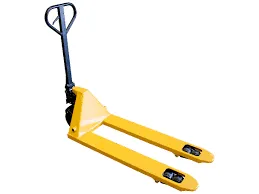


Types of Fall Protection Ensuring Safety in the Workplace
Falls are among the leading causes of workplace injuries and fatalities, particularly in industries such as construction, manufacturing, and warehousing. As such, implementing effective fall protection measures is crucial to ensuring the safety of workers at heights. There are several types of fall protection systems that can be utilized to minimize the risk of falls, each with its own advantages and applications.
1. Personal Fall Arrest Systems (PFAS)
Personal Fall Arrest Systems (PFAS) are designed to safely catch an individual who has fallen. These systems typically consist of three main components a harness, anchorage, and a lanyard with a deceleration device. The harness is worn by the worker, distributing the forces of a fall across the body. The anchorage point is a secure location where the fall protection system is attached, and the lanyard connects the harness to the anchorage. PFAS are highly effective for workers who are required to work at heights, such as roofers, window washers, and construction workers. It is important that PFAS are properly fitted and regularly inspected to ensure functionality.
2. Guardrails
Guardrails are a passive form of fall protection that can be used in environments where workers are often near edges. These systems consist of barriers placed around the working area to prevent falls. Guardrails are commonly used on rooftops, stairways, and scaffoldings. They typically include a top rail, mid-rail, and toe board to provide comprehensive protection. The main advantage of guardrails is that they do not rely on the worker to remember to use them; as long as they are properly installed and maintained, they continuously provide protection against falls.
3. Safety Nets

Safety nets are another effective fall protection measure, particularly in construction settings. These nets are installed below the work area and are designed to catch falling workers or materials. Safety nets should be installed in areas where workers are exposed to fall hazards, such as high scaffolding or bridges. They are particularly useful when work is taking place over open areas, such as when building the upper floors of a structure. Regular inspection and maintenance are crucial to ensure the nets remain in good condition and can effectively prevent falls.
4. Fall Restraint Systems
Fall restraint systems are designed to prevent workers from reaching fall hazards rather than catching them after the fall occurs. This is achieved through the use of belts or harnesses that limit the worker’s movement to within a safe distance from the edge of a surface. Fall restraint systems are beneficial in environments where workers need to access areas close to edges but should not fall off. They provide a proactive approach to fall safety, ensuring that workers remain protected while performing their duties.
5. Controlled Access Zones (CAZ)
Controlled Access Zones (CAZ) are designated areas where access is limited to only those workers authorized to enter environments with fall hazards. This method is used in conjunction with other fall protection measures. CAZs ensure that only trained personnel are allowed near edges or elevated areas, reducing the likelihood of falls. Proper signage and barriers are essential for establishing and maintaining a CAZ.
Conclusion
In conclusion, fall protection is essential for maintaining a safe working environment, particularly in industries where workers operate at heights. Understanding the different types of fall protection, such as Personal Fall Arrest Systems, guardrails, safety nets, fall restraint systems, and Controlled Access Zones, can help employers select the right systems for their specific work conditions. Regular training, inspection, and maintenance of fall protection measures further ensure that workers are safeguarded against fall hazards, ultimately reducing accidents and enhancing workplace safety. By prioritizing fall protection, we can create safer environments for all workers and mitigate the risks associated with working at heights.



